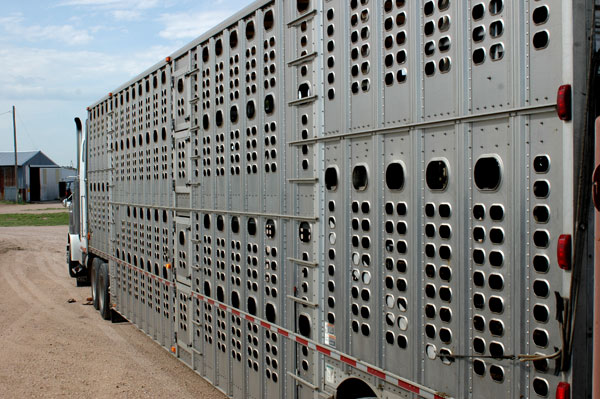Tight supplies and growing hopes for winter forage are suporting calf and feeder markets despite the gyrations in corn volatility and outside markets.
October 13, 2012

Riding the razor’s edge of corn supply and demand is an economically bloody business.
Near limit-up corn futures Thursday took Feeder Cattle futures limit-down and near limit-down across most of the board. The jump in corn was in response to estimates from USDA projecting lower corn stocks.
The next day, nearby corn futures closed 20¢ lower and about even week-to-week, up an average of about 6¢ through the front seven contracts.
A Closer Look: Tight Corn Stocks Add Market Uncertainty
Feeder Cattle futures rebounded some, but closed an average of $2.27 lower across the board week-to-week ($1.72-$3.67 lower).
Tight numbers and hopes for winter wheat pasture are more than keeping cash buyers in the seats, though.
At Ozarks Regional Stockyards in West Plains, MO Tuesday, the market reporter noted, “Stockpiles of corn silage and the more recent promise of wheat pasture had more influence on the stronger calf market than the near level corn futures and cattle board. However, knowing a shorter cattle supply is coming didn’t hurt anything either.” Steers there traded $3-$6 higher at 350-800 lbs. with instances of $8-$10 higher.
Even as the feeder board cratered Thursday, 4-weight steers and heifers traded $4-$8 higher at Mobridge Livestock Auction in South Dakota the same day. Prices at 450-550 lbs. were steady to $1 higher; mostly steady with higher undertones at 600 lbs. According to the market reporter there, “Very good overall quality today is most likely the factor influencing slightly higher prices despite the downward movement for CME Feeder Cattle futures.”
Regional average cash prices for calves and feeders traded narrowly mixed.
More specifically, analysts with the Agricultural Marketing Service (AMS) explained Friday, “Available offerings of true yearling feeder cattle sold mostly steady to as much as $3 higher. Calf prices were uneven and extremely regionalized with the best demand noted in the Oklahoma wheat pasture country and the Northwestern Plains. These areas sold calves $3-$8 higher with the full advance on steer calves weighing 400-550 lbs. down south and 300-450 lbs. up north…The farther calves were sold from these two hot spots, the progressively lower the trends became with Southeastern markets $1-$3 lower (east of the Mississippi River) and as much as $8 lower in North Carolina.”
Incidentally, one of the highest price averages we saw for the week was $216.57 for a jag of 503 steers at Ogallala Livestock Auction in Nebraska that weighed 378 lbs.
Live Cattle futures closed the week mostly lower. That was despite cash fed cattle trade finally breaking loose Friday with moderate demand in all regions. Live sales were $1-$2 higher at $125-$126, except for unevenly steady in Iowa-Minnesota at $122. Dressed sales were $2-$3 higher at $192-$193.
Though spot October Live Cattle advanced 85¢ on the week, all but one contract across the rest of the board closed 12¢-90¢ lower, mostly 45¢-90¢ lower.
“The higher market was badly needed by cattle feeders with most pens still falling well shy of their breakevens, but rather impressive with carcass weights at an all-time high and fierce competition from cheaper proteins,” say AMS analysts.
About the Author(s)
You May Also Like





